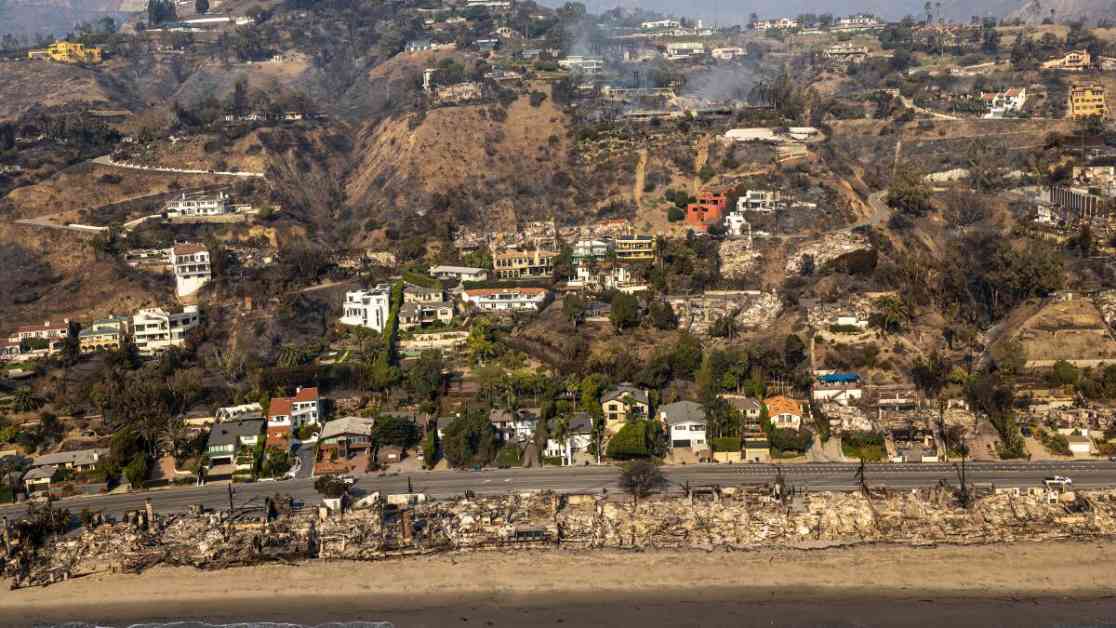Weather Factors Behind L.A. County’s Devastating Fires
Los Angeles County is currently facing a catastrophic wildfire event, fueled by a rare windstorm that occurs once in a decade. The extent of the destruction is difficult to quantify due to the ongoing fires, with figures quickly becoming outdated. However, it is crucial to understand the natural elements that contributed to this apocalyptic outcome and how they may continue to impact the nation in the days ahead.
The Perfect Storm: A Detailed Analysis
The first key factor in this deadly combination was a recent drought that gripped Southern California. While the northern part of the state experienced heavy rainfall, Southern California remained exceptionally dry. Only 0.03 inches of rain fell at LAX in the last three months of 2024, a stark contrast to the average rainfall of over 3.5 inches during the same period in a typical year. This prolonged drought left vegetation parched and highly susceptible to ignition, as dry fuel burns more easily and rapidly than wet fuel.
Following the drought, a high-pressure weather system settled over southern Idaho, causing winds to circulate clockwise around its center in the Northern Hemisphere. Positioned near 6:30 on this imaginary clock face, Southern California experienced east-to-west winds, contrary to their usual direction. As these winds descended from the Mojave Desert to the coast, they warmed due to compression and accelerated through narrow mountain passes. These hot, dry Santa Ana winds, common in the region, reached exceptional speeds due to this high-pressure system, exacerbating fire risks.
The Final Blow: Unprecedented Wind Gusts
The extraordinary intensity of the Santa Ana winds was further heightened by a low-pressure system forming over the Gulf of California. With winds rotating counterclockwise around low-pressure systems, Los Angeles found itself caught between the contrasting pressure zones, akin to a baseball in a pitching machine. The combined forces of these systems generated wind gusts of up to 100 miles per hour in the San Gabriel Mountains, fueling the wildfires with oxygen, carrying embers, and propelling flames forward.
The hurricane-force winds, coupled with the exceptionally dry conditions, led to a rapid escalation of wildfires across L.A. County, making containment efforts challenging. As the low-pressure system moves eastward, it is forecasted to transform into a winter storm, traversing Southern states and causing disruptive ice and snow accumulations, posing hazards to travel and power infrastructure.
Climate Change and Extreme Weather
The interconnectedness of extreme weather events like the wildfires in L.A. County underscores the impact of climate change on our environment. The intensifying effects of climate change, including more frequent droughts, play a pivotal role in creating conditions ripe for devastating wildfires. While it is challenging to definitively attribute individual events to climate change, the increasing levels of carbon dioxide in the atmosphere are undeniably contributing to the escalation of extreme weather events.
Ned Kleiner, a scientist and catastrophe modeler at Verisk with a doctorate in atmospheric science from Harvard, emphasizes the critical need to address climate change to prevent the normalization of such catastrophic wildfires. As we navigate the complex interplay of natural factors and human-induced climate change, it is imperative to take proactive measures to mitigate the impacts of extreme weather events and safeguard our communities for future generations.




